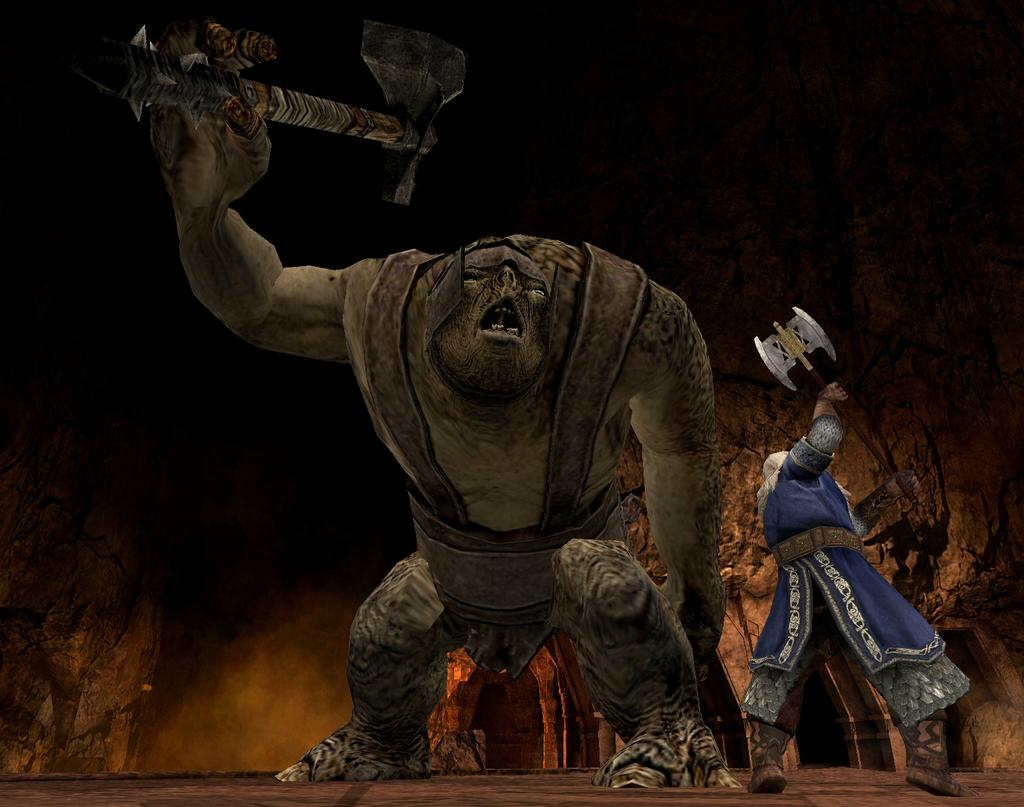
I should preface this piece by first pointing out that I am a giant Lord of the Rings nerd and, as such, anything which falls within its canon is instantly, inherently appealing. That being known, it is my pleasure to discuss with you The Lord of the Rings: The Third Age, a turn-based effort which is oft forgotten amongst the lauded final two parts of the movie tie-in series. Although it wasn’t as detailed mechanically as other entries in the genre, like Final Fantasy, it offered a uniquely appealing method of traversing the world of Tolkien.
There may be some spoilers ahead but, frankly, if you haven’t played this yet then we can’t be friends anymore.
The strength of Tolkien lies in his world building and, with that in mind, the first decision which I presume the developer had to make was a solid one. To explain, the game itself is officially licensed, so the prospect of a turn-based affair revolving around the original Fellowship from the novels and movies was not unlikely. Indeed, some of the major characters do make an appearance – but the story actually follows a different group whose adventure happens in parallel to the main narrative. This is a bit of a masterstroke because, although there is some risk adding character’s who aren’t part of the original canon, it frees the developer up stray away from the expectations of a attentive fan base. Having said that, the character designers did an excellent job of making the main group seem familiar and comfortable in Middle-Earth, as though they were just lesser known participants from the mind of Tolkien himself.
This decision also made the payoff wondrous when someone recognisable did arrive, let alone if we got to play as them. The Balrog fight, for instance, appears quite early in the game and allows the player to battle as Gandalf and wield his terrifying lightning powers. All we had done before was use basic combat skills and magic with our core group. It was a brilliant departure and the sudden arrival of a monumentally powerful Gandalf (albeit the Grey) is still one of my favourite memories in gaming – ever.
The RPG elements were well thought out, if a little sparse, and progression felt both measured and meaningful. The baseline difficulty of the battles themselves was challenging, with some specials testing my little noggin to its limit. The way battles were initiated also made a ton of sense in the context of Middle Earth. As you traversed the different areas of the map, a ring would appear in the top-right hand corner of the screen, the opacity of which dictated how close you were to impending combat – the more saturated the logo, the closer the trouble. This would lead to either a sense of palpable tension as an unknown enemy drew closer, or desperately trying to find another way round in the knowledge that my depleted party was about to get pummeled into next week. As well as this, the frequency of battles depended on where you were, with orc-heavy areas producing more skirmishes. One particularly memorable segment tasks the user with crossing a heavily fortified bridge, offering a total of five increasingly challenging battles- a real war of attrition.
As well as this, all the finer details were well realised, with items, armour, buildings and scenery particularly reminiscent of the art style of the movie series. This game format really was the complete package and my favourite realisation of Tolkien’s creation (including the excellent Shadow of Mordor). Although it has been technologically outstripped multiple times in the last 15 years, none have been able to match it’s accuracy to the source material whilst still offering an entirely new narrative and character arcs. With that, it seems only fair that an updated version of this makes its way to modern platforms. With the massively increased hardware capabilities it would be possible to have a far grander affair but one which retains the same indomitable charm. And if one guy on the internet politely requesting something gets made doesn’t do the trick, then I’m not sure what will.




